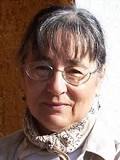
Lise Menn
Department of Linguistics
University of Colorado
lise.menn@colorado.edu
website

|
Lise Menn Department of Linguistics University of Colorado lise.menn@colorado.edu website |
| Participants: | 1 |
| Type of Study: | naturalistic |
| Location: | United States |
| Media type: | audio |
| DOI: | doi:10.21415/7QWF-PA61 |
I audiotaped these longitudinal data on Jacob from September 1974 to June 1975 as raw material for my dissertation, mentioned above. Partial funding was provided by a dissertation improvement grant from the National Science Foundation. The goal of the project was to follow and describe the development of one child’s phonology, starting from the first word and continuing for the available time, nine months, which turned out to be about 100 recording sessions.
Jacob was the first child of two linguists, Jorge Hankamer and Judith Aissen, who were then both junior linguistics faculty at Harvard. Jacob’s father is from Texas and his mother from northern New Jersey; I grew up just outside Philadelphia. The other babysitter was Greek, the wife of a graduate student, and probably spoke a mixture of Greek and English to Jacob and to her own son, who was about the same age. She is identified by a pseudonym.
DVD’s of the video recordings were made in the 1990s and contributed to CHILDES. For many sessions, only Jacob and I are present (except for a few minutes with one or both of his parents near the beginnings and ends of some sessions), but about once a week, another graduate student joined us, either Annie Zaenen, then in the Harvard Ph.D. program in Linguistics, or Randa Mulford, who was then working for her M.A. there. About once a month, Sharon Haselkorn, then a graduate student in psychology, came to the apartment to perform Piagetian cognitive assessments. Also, because recording conditions at the apartment were not ideal (the main problem being external traffic noise), I occasionally took Jacob to be recorded in a sound-treated room with best-quality equipment (recording tape speed 15 ips) belonging to the Speech Communication Group at the MIT Research Laboratory of Electronics, courtesy of the late Prof. Kenneth N. Stevens. Prof. Paula Menyuk of Boston University was present at several of those sessions.
The layout of the family’s 4th floor apartment was approximately as shown in this figure . Jacob and I played in the living room and ate in the adjacent dining area; there was no wall separating the two areas. The microphone was camouflaged with a dark-colored sock and connected to the tape deck by a long cable. When we were in the living room, it was kept on a lower shelf of a bookcase very close to where we played; it was moved into the dining area when we were eating. The tape recorder was kept on the floor in a corner of the dining area. When videotapes were made, the video camera was on a tripod that was set so that it could be swiveled between the two areas.